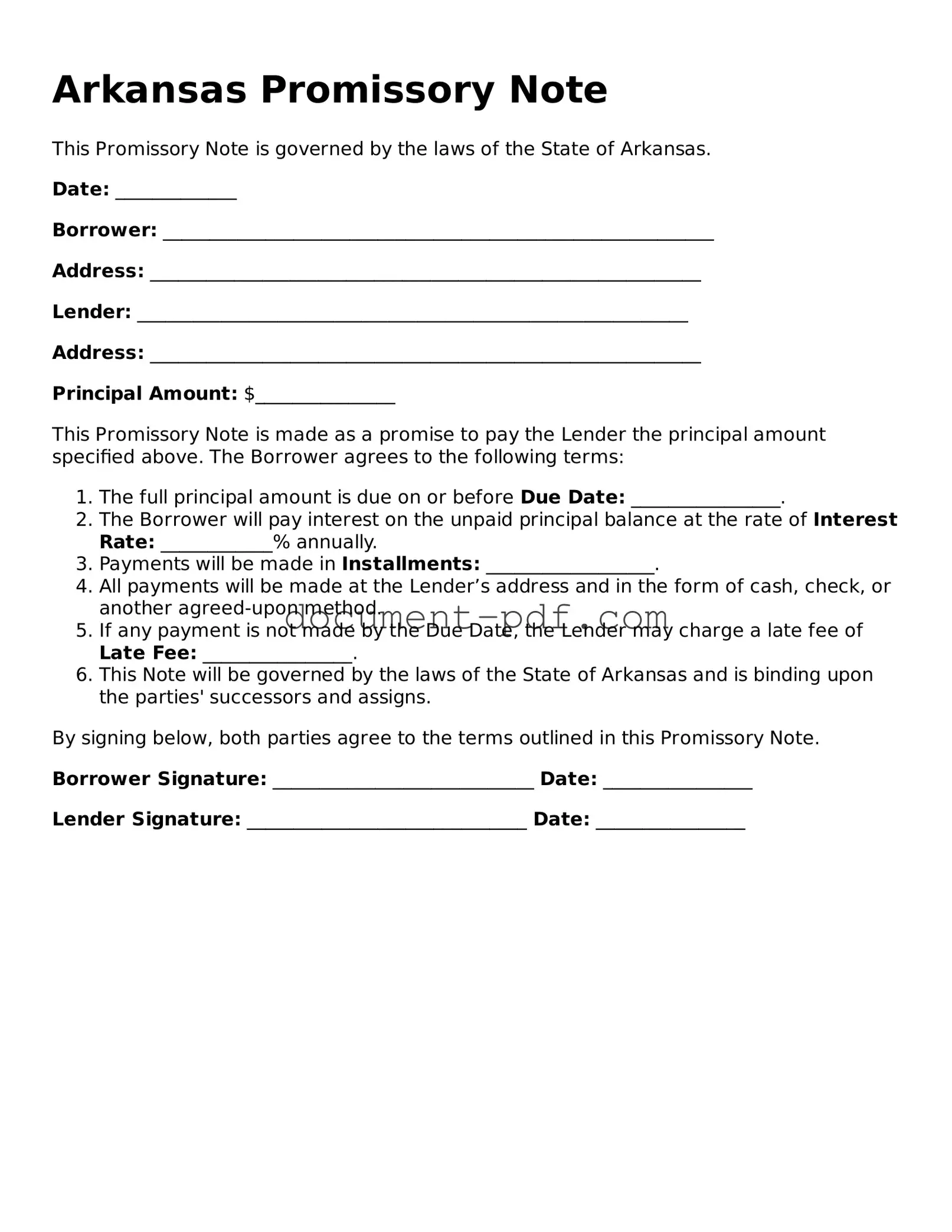Arkansas Promissory Note
This Promissory Note is governed by the laws of the State of Arkansas.
Date: _____________
Borrower: ___________________________________________________________
Address: ___________________________________________________________
Lender: ___________________________________________________________
Address: ___________________________________________________________
Principal Amount: $_______________
This Promissory Note is made as a promise to pay the Lender the principal amount specified above. The Borrower agrees to the following terms:
- The full principal amount is due on or before Due Date: ________________.
- The Borrower will pay interest on the unpaid principal balance at the rate of Interest Rate: ____________% annually.
- Payments will be made in Installments: __________________.
- All payments will be made at the Lender’s address and in the form of cash, check, or another agreed-upon method.
- If any payment is not made by the Due Date, the Lender may charge a late fee of Late Fee: ________________.
- This Note will be governed by the laws of the State of Arkansas and is binding upon the parties' successors and assigns.
By signing below, both parties agree to the terms outlined in this Promissory Note.
Borrower Signature: ____________________________ Date: ________________
Lender Signature: ______________________________ Date: ________________
